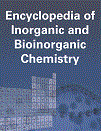Aldehyde Ferredoxin Oxidoreductase
Abstract
Aldehyde ferredoxin oxidoreductase (AOR) is a homodimer where each subunit contains a [4Fe–4S] cluster and a mononuclear tungsten atom coordinated by the dithioline groups of two pterin molecules. The two subunits of the dimer are bridged by a monomeric iron site. AOR is a member of a family of five closely related tungstoenzymes found in organisms that grow at high temperatures in marine volcanic vents. The enzyme catalyzes the two-electron oxidation of its aldehyde substrate to the corresponding acid with the concomitant reduction of ferredoxin, its physiological electron acceptor. The enzyme can oxidize a wide range of aliphatic and aromatic aldehydes. The most efficient substrates for AOR are acetaldehyde, isovaleraldehyde, phenylacetaldehyde, and indoleacetaldehyde, the aldehyde derivatives of some of the most common amino acids.
3D Structure
Schematic representation of the AOR dimer, showing the two subunits and the associated metallocenters. The secondary structures of each subunit are color coded with α-helices, β-sheet and ‘coil’ structures represented with cyan, red and green, respectively. Molecular structure figures have been prepared with MOLSCRIPT23 and RASTER3D.24 PDB code: 1AOR.



